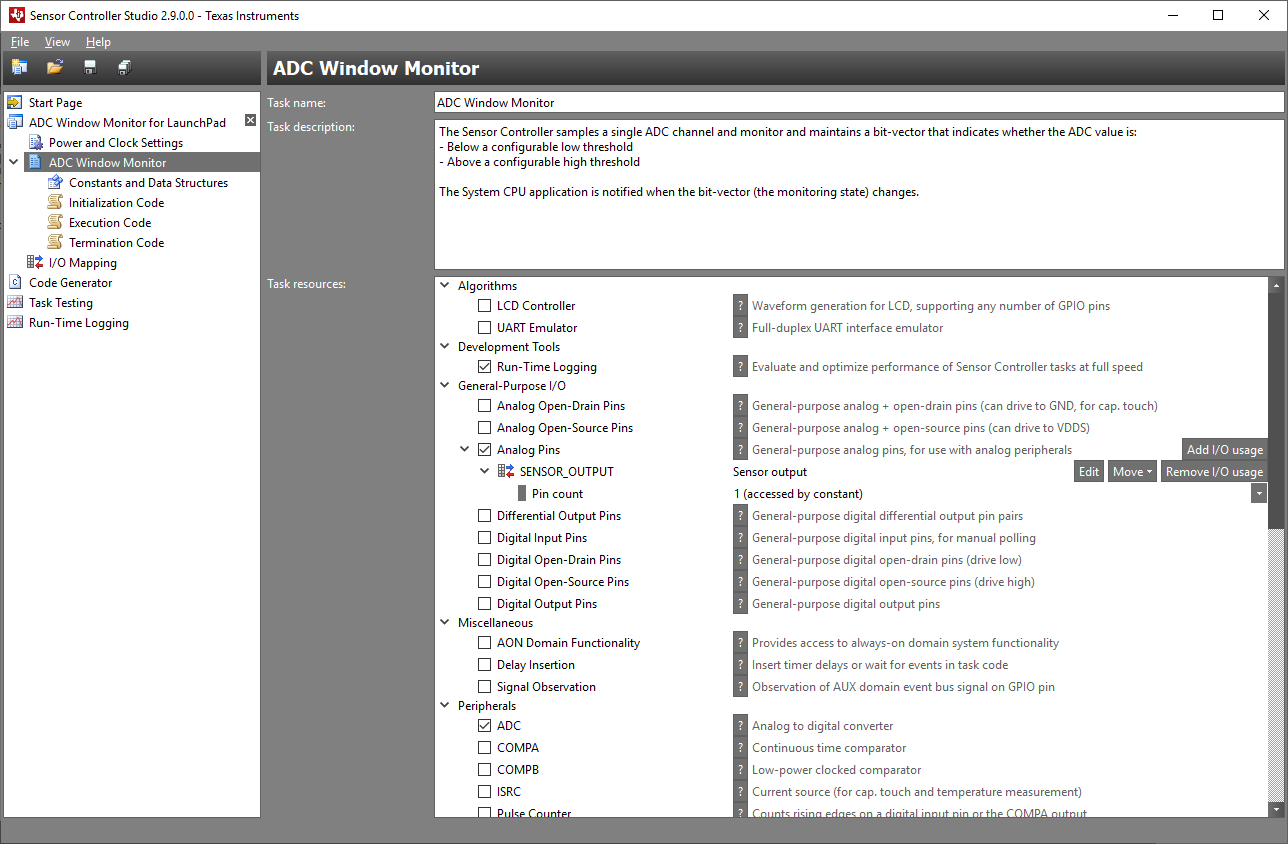SWRU439M October 2015 – April 2022
- Trademarks
- 1Introduction
- 2Overview
- 3Prerequisites
- 4Installation
- 5Sensor Controller Studio Tutorials
-
6Sensor Controller Studio Walkthrough
- 6.1 Start Page and Navigation
- 6.2 Documentation
- 6.3 Open the Example
- 6.4 Project Panel
- 6.5 Task Panel Settings
- 6.6 Constants and Data Structures Panel
- 6.7 Task Code Editor Panels
- 6.8 I/O Mapping Panel
- 6.9 Code Generator Panel
- 6.10 Compiling Example Applications in IAR or CCS
- 6.11 Task Testing Panel
- 6.12 Run-Time Logging Panel
- 7References
- 8Revision History
6.5 Task Panel Settings
The task panel contains settings that apply to one task, including resource selection and configuration (see the example in Figure 6-5).
 Figure 6-5 Task
Panel
Figure 6-5 Task
PanelThe task name is used in the generated SCIF driver code to identify the task and must be unique per project.
The task description (also included in the generated driver) can be used to explain the task purpose, usage, electrical connections, and so forth.
Task resources are selected to enable access to hardware modules, firmware framework functionality and various software algorithms. Some resources have configuration settings. For the "General Purpose I/O" resources, multiple usages with different name and configuration can be specified. Press the help buttons [?] to view resource documentation, including associated procedures, constants and variables.
For the ADC Window Monitor task, the following resources are selected:
- ADC: to measure the output of the light sensor
- Analog Pins (one instance): to connect the analog sensor output to the ADC
- System CPU Alert: to wake up and generate interrupts in the System CPU application
- RTC-Based Execution Scheduling: to trigger periodical execution of the task